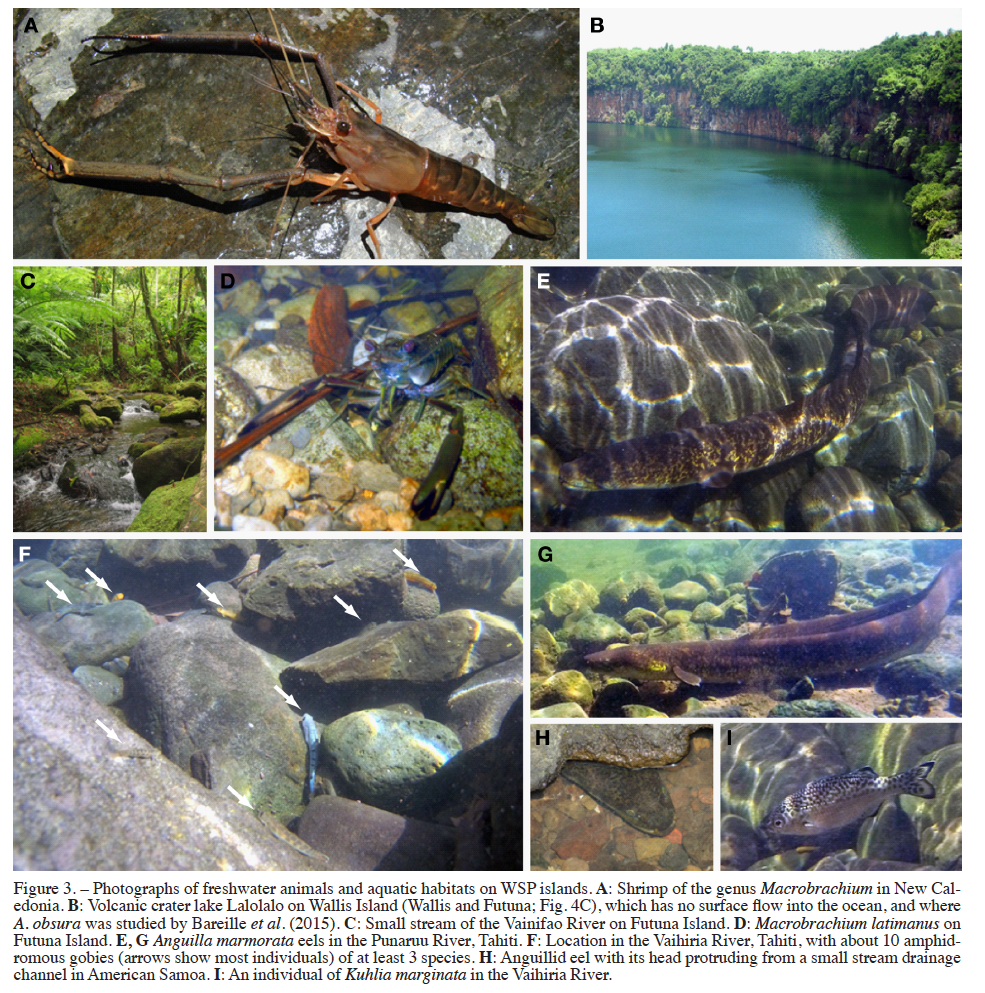The South Pacific: a unique geological and oceanographic region of freshwater island-oasis habitats for anguillid eel population interactions
The South Pacific: a unique geological and oceanographic region of freshwater island-oasis habitats for anguillid eel population interactions
Miller, M. J., Sasal, P., Schabetsberger, R., Kuroki, M., Acou, A., Chang, Y.-L. K., Higuchi, T., Watanabe, S., Aoyama, J., & Feunteun, E. (2024). The South Pacific: a unique geological and oceanographic region of freshwater island-oasis habitats for anguillid eel population interactions. Cybium, 48(1): 5-33. https://doi.org/10.26028/CYBIUM/2023-045
Zoogeography and ecology of 3 widespread anguillid species (Anguilla marmorata, A. megastoma, A. obscura) in the western South Pacific are reviewed in relation to the freshwater habitats and communities of the many islands of Oceania (island geological ages, from > 40 Ma to < 1 Ma. Anguillid eels show habitat segregation among A. obscura (lower reaches-brackish water), A. marmorata (habitat generalist) and A. megastoma (upper reaches), where they feed on amphidromous snails, Macrobrachium shrimp and gobies, and freshwater insect larvae. Some information has been obtained about possible anguillid spawning areas in the region near New Caledonia and Fiji from larval surveys and satellite transmitting tagging studies. Larval drift simulations suggest separate spawning areas occur in the eastern region of French Polynesia. Little is known about how geography might influence the spawning ecologies and population structures of South Pacific anguillid eels that live on the many tropical islands that are spread across a wide region of ocean in the western Indo-Pacific.
BOREA contact: Eric Feunteun, eric.feunteun@mnhn.fr


